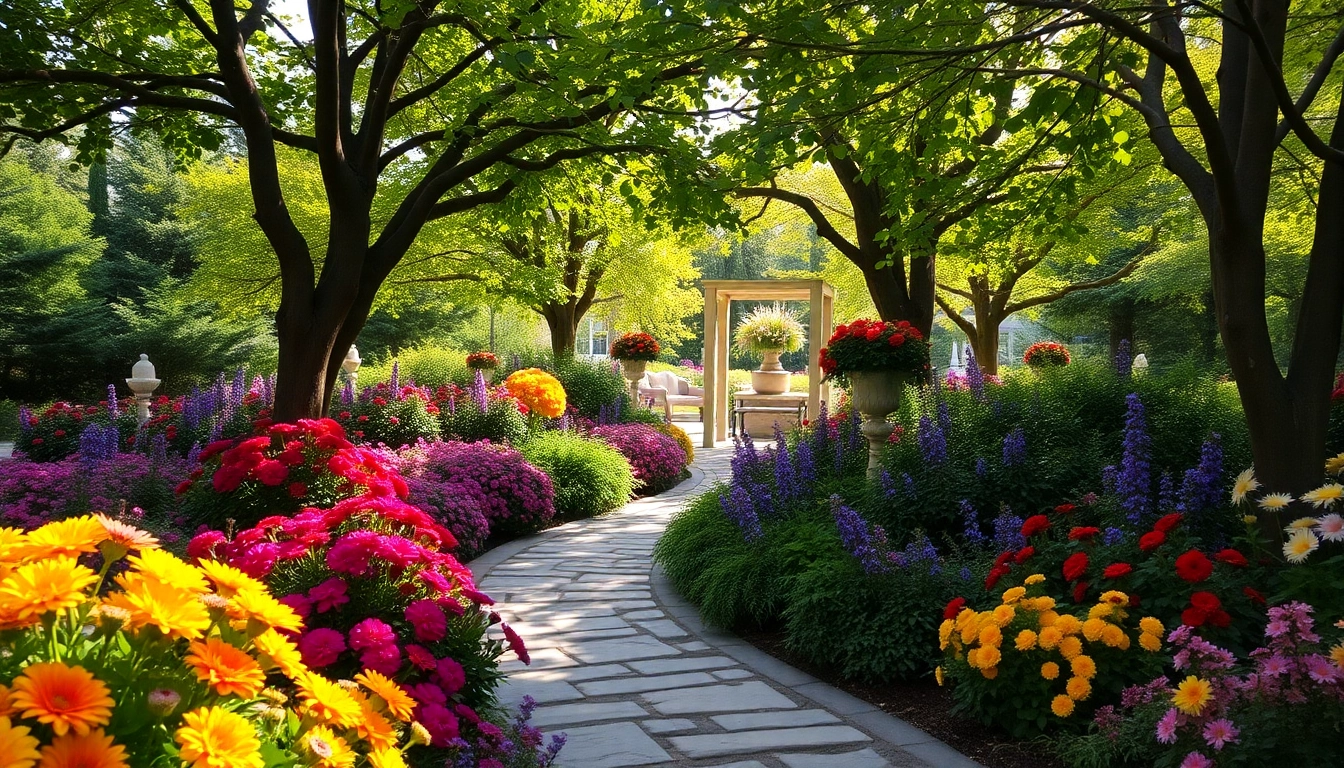Understanding Landscape Design Services
In the ever-evolving realm of outdoor aesthetics, landscape design service stands out as an essential aspect for homeowners and commercial property owners alike. At its core, landscape design encompasses the planning, management, and execution of outdoor spaces, transforming them into functional and visually appealing environments. This article delves deep into the nuances of landscape design, peeling back the layers of its significance, the challenges faced, and the transformative power it wields in reshaping our surroundings.
What is Landscape Design?
Landscape design is both an art and a science that focuses on the creation of outdoor spaces. This discipline merges architecture with horticulture to foster an engaging and harmonious environment that aligns with nature’s beauty. It encompasses various elements, including plant selection, terrain modification, and the incorporation of furniture and structures, to create a cohesive outdoor experience.
The Importance of Professional Landscape Design Services
Engaging with professional landscape designers brings an array of benefits. These experts possess a comprehensive understanding of environmental conditions, local plant species, and design principles. Their insights ensure that landscapes are not just aesthetically pleasing but sustainable and functional. The importance of professional landscape design extends to mitigating environmental issues, enhancing property value, and creating outdoor spaces that support mental and physical well-being.
Common Challenges in Landscape Design
Despite its many advantages, landscape design is not without challenges. Common issues include budget constraints, environmental regulations, and the need for ongoing maintenance. Additionally, external factors such as climate change can impact plant selection and design integrity. Addressing these challenges requires foresight, creativity, and a comprehensive approach to planning.
Key Elements of Effective Landscape Design
Plant Selection and Arrangement
The choice and arrangement of plants are fundamental to successful landscape design. Factors like climate, soil type, and sunlight exposure play crucial roles in plant selection. Utilizing native plants can offer resilience and enhance local biodiversity. Strategic arrangements foster aesthetic appeal and optimize space usage, providing not just beauty but also habitat for wildlife.
Incorporating Hardscapes in Your Design
Hardscapes refer to the non-plant elements in landscape design, including walkways, patios, decks, and retaining walls. They provide structure and function, guiding movement through spaces and enhancing usability. The texture, material, and color of hardscapes should harmonize with natural elements to create a cohesive look, reinforcing the overall design theme.
Utilizing Natural Features for Aesthetic Appeal
Successful landscape design leverages existing natural features such as trees, rocks, and water bodies. These elements can serve as focal points or serve aesthetic functions, enhancing the beauty of the landscape while minimizing disruption to the environment. By embracing natural topography, designers can create unique and sustainable spaces that resonate with the landscape.
Benefits of Hiring a Landscape Design Service
Expertise and Knowledge
One of the most significant advantages of hiring landscape design professionals is their specialized expertise. These professionals bring extensive knowledge of design principles, environmental science, and ecological considerations, ensuring that the resulting spaces are not only beautiful but also sustainable and compliant with local regulations.
Time-Saving and Efficiency
Undertaking landscape design on your own can be time-consuming and overwhelming. Landscape design services streamline the process, saving valuable time and avoiding common pitfalls. Professionals can navigate the planning process, manage construction schedules, and ensure timely completion, allowing homeowners to enjoy their outdoor spaces much sooner.
Long-term Cost Effectiveness
While investing in professional landscape design services may seem costly initially, it can ultimately save money in the long run. Properly designed landscapes reduce maintenance costs, enhance property value, and prevent costly mistakes. A well-planned landscape can also potentially lower energy costs through strategic plant placement that provides shade and wind protection.
How to Choose the Right Landscape Design Service
Evaluating Portfolios and Client Testimonials
When selecting a landscape design service, assessing their previous work is critical. A portfolio showcases a designer’s style and versatility. Additionally, reading client testimonials provides insights into their reliability, creativity, and ability to meet client expectations. Look for designers whose work resonates with your vision.
Asking the Right Questions During Consultations
Initial consultations are vital opportunities to gauge a landscape designer’s compatibility with your project. Prepare a list of questions that cover their design philosophy, experience with similar projects, and approach to problem-solving. Inquiring about their process for incorporating client feedback can also reveal their commitment to collaboration.
Understanding Pricing and Services Offered
Landscape design services can come at various price points, depending on the scope of the project and the services provided. It is essential to clarify pricing structures and what is included in the service. Transparent discussion about your budget can assist in aligning expectations and ensuring that there are no surprises later in the project.
Success Stories: Transformative Landscape Design Examples
Residential Projects that Inspire
Many homeowners have seen their properties transformed through professional landscape design services. For instance, a suburban backyard can be turned from an underutilized area into a vibrant entertainment space with gardens, patios, and water features. These transformations not only enhance the aesthetic appeal but also increase the homeowners’ enjoyment of their outdoor spaces.
Commercial Spaces Elevated by Landscape Design
Commercial properties can greatly benefit from well-designed landscapes that create inviting atmospheres for customers. Landscape designs for restaurants and retail spaces often include seating areas, planters, and pathways that enhance patron experience while encouraging foot traffic. These thoughtful designs can lead to increased business and customer satisfaction.
Environmental Benefits of Thoughtful Design
Beyond aesthetics and functionality, responsible landscape design plays a crucial role in environmental sustainability. Projects that incorporate native plantings and sustainable practices, such as rain gardens and permeable pavements, contribute to biodiversity, reduce stormwater runoff, and create habitats for local wildlife. These practices are instrumental in promoting ecological health and resilience.
